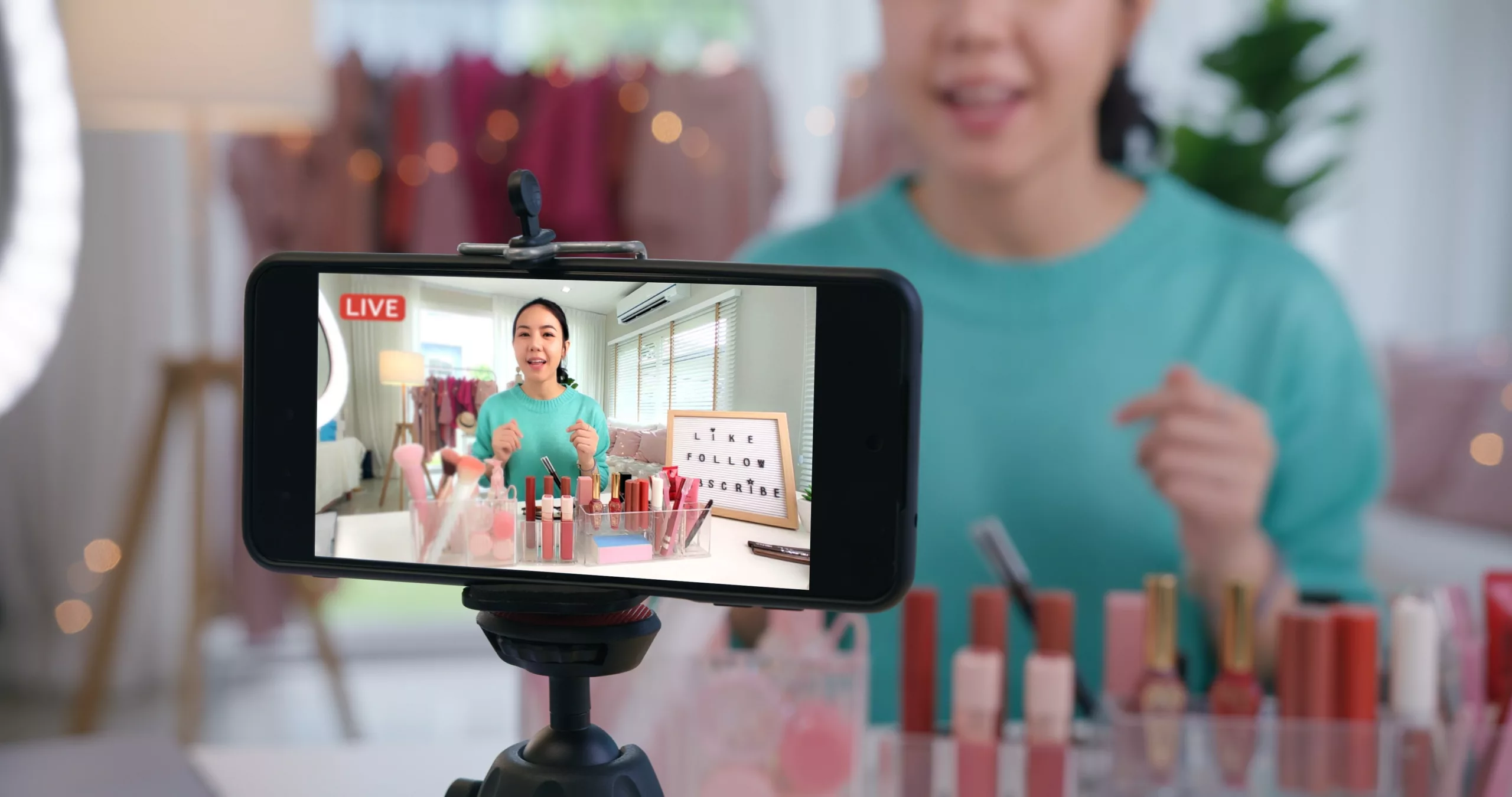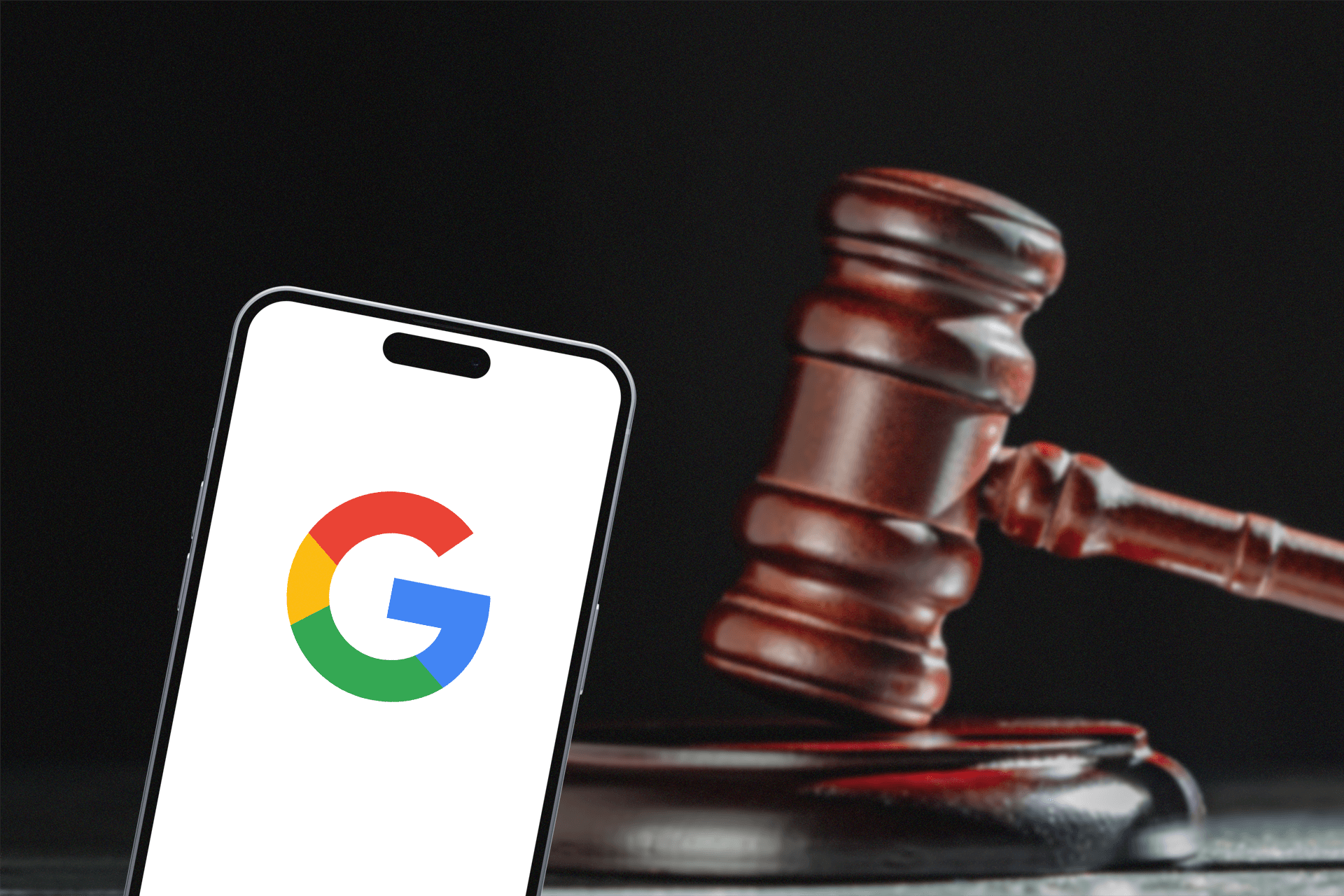October 11, 2024
Social media as a search engine: why the world is turning to social search
It’s no secret we all spend a lot of time scrolling social media. In fact, the average internet user spends 2.5 hours on social media every day, accounting for over a third of total time spent online, while 95% of all internet users log onto social media every month.
But the way we use social media is changing: 75% of consumers now use social platforms for information, product, or brand searches, highlighting a broader trend where social media is increasingly being used alongside – or instead of – traditional search engines.

How has the social media landscape changed?
What was once used to stay in touch with family and friends, or connect with people around the world, has evolved significantly since the early 2000s.
Facebook launched in 2004, Twitter two years later, and it wasn’t until Instagram set up shop in 2010 that photo content began to flood our feeds. Text-based updates suddenly felt old hat, out of touch – social media users were now able to capture moments and tell personal stories in real-time. The noun ‘selfie’ entered our general vernacular, and visual user-generated content quickly became a simple but powerful way to connect, engage, and communicate.
‘Hey guys, welcome to my channel’: YouTube and the rise of video content
Just one year later, YouTube is hitting its stride, racking up more than 1 trillion views in 2011 alone. Once again, the landscape was forced to evolve with the way users wanted to consume content – and, as a new generation of YouTubers and creators showed, video was quickly becoming king.
Creators focused on making videos over 10 minutes in length – an unofficial rule bound to keep viewers hooked, with YouTube’s algorithm also prioritising longer content, while also making room for multiple mid-roll ads.

User-generated content and the beginnings of influencer marketing
The 2010s saw the meteoric rise of influencer marketing. The general population suddenly had access to, and could form close, parasocial relationships with, relatable online authorities – ordinary people who could address their needs genuinely, directly, and from a place of authenticity. Naturally, creators began to leverage and monetise these relationships, paving the way for the influencer-driven landscape we all know today.
Organic social platforms wanted in on the action, too. To maximise their revenue opportunity, networks quickly pivoted to a pay-to-play model. Everything brands knew about organic traffic and engagement disappeared; the shift to paid social media strategies, seamlessly integrating ads into our daily scroll to capitalise on the vast amount of time users were spending online, was inevitable.
The power of short-form video content: how TikTok is reshaping search habits
Fast forward to 2021. TikTok has amassed over one billion users worldwide, shaking up social media by putting short-form content in the spotlight. Designed for quick consumption, TikTok videos proved perfect for today’s fast-paced, short-attention-span audiences.
Now, when young people want to learn about the best coffee spots in London, they won’t start a Google search and end up on TripAdvisor. Instead, they’ll search via TikTok and start scrolling, consuming personalised and relevant content created by other users.
Why? Authenticity. It’s YouTube’s recipe for success – relatable, authentic information – but cut down into digestible, bite-size chunks with minimal reading.
TikTok’s success forced other social media platforms to adapt, or otherwise risk losing users – because if people want to consume video, they’ll prefer social platforms integrating them in search.
Naturally, social media platforms have grown into powerful, highly influential search engines. For new brands, then, this change presents a real opportunity to be seen by potential customers and connect with target audiences.

How are social media platforms like Instagram, YouTube, and Pinterest following suit?
Off the back of TikTok’s rapid rise, other social media platforms have pivoted to video. Enter Instagram reels, YouTube shorts, and Pinterest’s video content, reinforcing this shift in search habits.
Let’s take a closer look at Pinterest. A visual-first social platform, its search function inspires users by offering personalised and relevant visual content based on trends, keywords, and user behaviour. Though once famed for its photo-focused feed, video content on Pinterest now racks up over a billion views on a daily basis.
So, what sets Pinterest apart from other video-heavy platforms like YouTube, TikTok, and Instagram? It’s all about the experience.
Branded and non-branded content are in alignment, so video ads feel right at home. In fact, they play a key role in the user’s inspiration-seeking journey. So much so, Pinterest claims 97% of searches carried out on its platform contain no brand terms, giving smaller brands an opportunity to stand out in search.
But who is driving this change? Spoiler alert: it’s not just younger generations
Using social media as a search engine is most prevalent in young consumers, particularly Gen Z, who are constantly tapping into their phones for answers, ideas, and inspiration. Brought up online and with 24/7 access to the internet via mobile devices, it’s no surprise 46% of Gen Z prefer social media over traditional search engines.
But millennials are not far behind. Research shows 35% use social media instead of traditional search engines, while a resounding 84% of baby boomers feel social media is improving their lives.
Needless to say, older demographics are becoming more and more comfortable with using social media – and not just to connect with friends and family, but also as a tool for discovery. And it’s no wonder: 1 in 3 people now access the internet exclusively on their smartphones. It’s this mobile-first mentality that’s helping to reshape our relationship with the digital world as we know it.
What does this mean for traditional search engines like Google?
Let’s get one thing clear: Google isn’t going anywhere. However, the tech giant has seen mounting criticism, recently facing a landmark antitrust lawsuit – the first of its kind in the modern internet era – which ruled it had unlawfully used its market dominance to control competition.
The potential consequences of breaking up Google’s monopoly could influence how people engage with search, creating opportunities for alternative methods to gain momentum, including the use of social media as a search engine.

Is social media content the future of search results?
And it’s not just social platforms that are adapting to keep users engaging with their product – search engines are, too.
Traditional search engines are evolving to integrate social media and visual results in SERPs. Profiles, posts, and trending content from platforms like Instagram and X (Twitter) are now crawled by Google for relevant keywords – just like any other website.
By showing social media posts to answer search queries, traditional search engines are looking to offer users a more comprehensive, relatable search experience. At the same time, it also gives businesses with strong digital strategies the opportunity to break into Google SERPs, broadening their reach and getting more eyes on their brand.
But with so much change in how social platforms operate and interact with traditional search engines, what can you do to stand out?
Social SEO: how to optimise your socials for search
While best practice for socials used to be cramming 30 different hashtags into every post, guidance has changed. It’s clear brands should now stick to a ‘less is more’ approach.
As Adam Mosseri, head of Instagram, confirmed earlier this year, hashtags no longer drive reach on the platform.
When it comes to brand discovery and helping users find you, creating valuable, engaging content with relevant keywords has never been more important. By weaving these relevant keywords into your social media posts and bio, you can significantly increase organic views of your content and social profile.
Is there still a place for hashtags on social media platforms?
The benefit of using hashtags varies from one platform to the next, as does guidance. For LinkedIn, it’s best practice to use no more than 3-5 relevant hashtags per post. On this platform hashtags are also added to URLs to enhance visibility in search results, so it’s especially important to get them right.
What about Instagram? 3-5 maximum. These hashtags will help categorise your feed, making it easy for users to follow your brand and stay up-to-date with your activity.
For users searching via Instagram, though, there’s a distinct difference. Searching ‘Norfolk’ creates a curated feed of results, whereas ‘#Norfolk’ also allows users to follow the term and see regular updates in their feed.

For single searches, keywords are sufficient, but for users with an ongoing interest in a particular topic, following the keyword will mean they’re continually served content using the hashtag, giving your brand greater visibility online.
TikTok differs slightly, in that hashtags don’t influence search results. However, using hashtags gives brands the opportunity to appear in the ‘trending hashtags’ function on the platform, which makes it a no-brainer.
How can OneAgency help?
To say the social media landscape has changed isn’t just an understatement – it’s an oversimplification, because, in reality, the landscape is always changing.
Given the growing importance of social media channels in the future of search, now is the time to incorporate social media into your broader digital marketing and content strategy, so you can not only stay ahead but also stand out.
As a full service marketing agency, we always have our finger on the pulse. With 50+ specialists, and a dedicated social media, SEO, and search team, we excel at enhancing online visibility and optimising content to drive sustainable, long-term results.
As younger consumers mature, the digital realm and how we interact with it will continue to evolve. Social media could become the go-to search engine – and ‘Google it,’ well that might soon become a phrase of the past.

